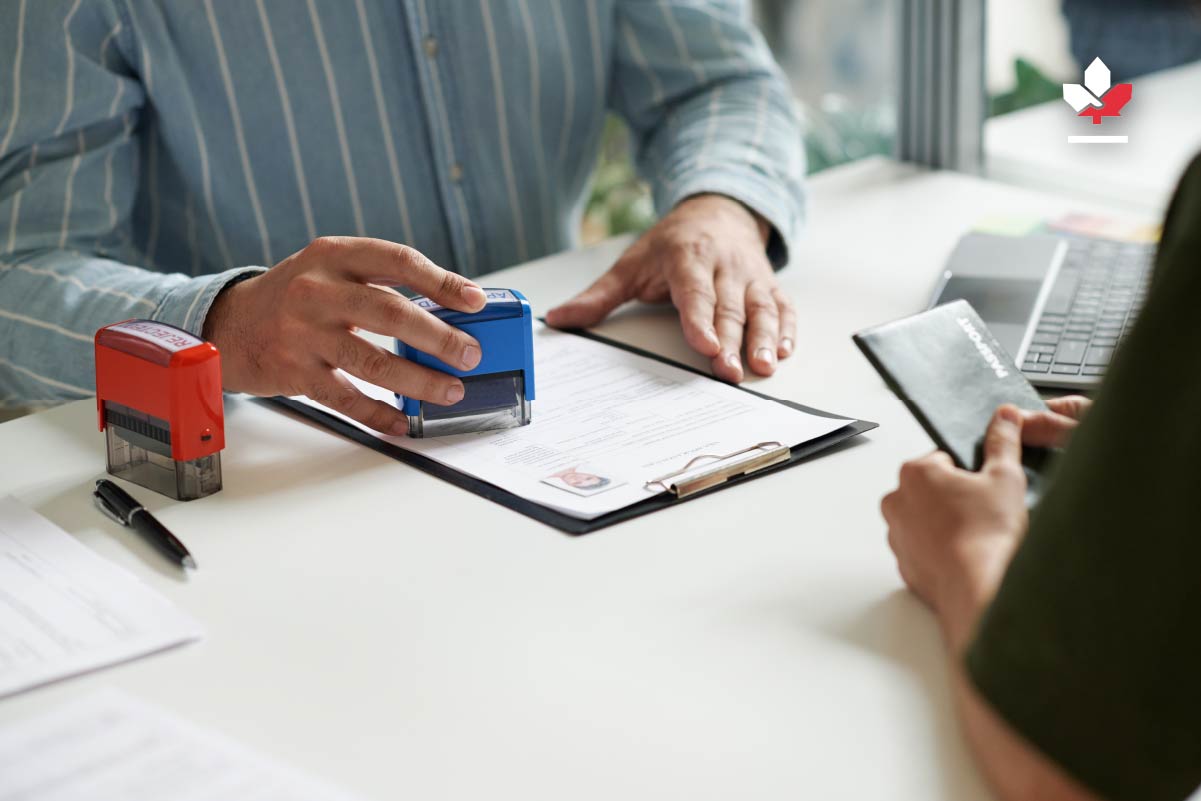Eligibility Requirements For Canada's Bridging Open Work Permit
July 5, 2024
|
Canada's Bridging Open Work Permit offers a pathway for individuals awaiting Canadian permanent residency decisions, ensuring continuity in employment while their applications are processed. Understanding the eligibility criteria is vital for anyone transitioning smoothly from a temporary Canada work permit to permanent resident status. Meeting these requirements allows you to maintain your legal status in Canada and continue contributing to the Canadian workforce without interruptions.
Are you ready to learn what can make you eligible to apply for Canada's BOWP? Then, join us in discovering the eligibility criteria needed to qualify for Canada's BOWP, facilitating a seamless transition toward Canadian permanent residency.
What is Canada’s Bridging Open Work Permit?

Canada's BOWP allows temporary residents to work while their permanent residence (PR) application is processed. To qualify, you must be in Canada with valid status, have applied for PR through specific programs such as Express Entry or Provincial Nominee Programs, and meet application stage requirements. Generally, this means your Express Entry profile has passed completeness verification. With a valid BOWP, you can work for any employer without needing a Labor Market Impact Assessment (LMIA).
What Are the Eligibility Requirements for Canada’s Bridging Open Work Permit?

Here are the key eligibility requirements for Canada's BOWP.
If You Applied For Canada PR Using Express Entry
If you applied for one of the Express Entry programs, such as the Federal Skilled Worker Program (FSWP), Federal Skilled Trades Program (FSTP), and Canadian Experience Class (CEC), you may be eligible to apply for the BOWP.
To be eligible, you must:
- Live in Canada (particularly outside Quebec) at the time you apply for your BOWP,
- Have a valid Canada work permit,
- Have an expired Canada work permit but maintained your status as a worker,
- Be eligible to restore your status and get a Canada work permit,
- Be the principal applicant on your Canadian permanent residence application,
- Have submitted a complete application for Canadian permanent residence and passed the completeness check,
- Have your acknowledgment of receipt letter Immigration, Refugees and Citizenship Canada (IRCC) will send this letter to your account).
If You Applied For the Provincial Nominee Program (PNP)
If you applied for the PNP via Express Entry, you may be eligible to apply for a BOWP if you fulfill the same requirements outlined for an Express Entry application. However, if you did not apply for the PNP via Express Entry, you must:
- Have no employment restrictions as a condition of your nomination,
- The supporting documents listed in the document checklist,
- A copy of your nomination letter,
- A copy of the acknowledgment of receipt letter you received when you submitted your PNP permanent residence application.
If You Applied as a Quebec Skilled Worker
If you applied for Canada as a Quebec Skilled Worker, you may be eligible to apply for a BOWP by making sure you:
- Live in Canada and intend to live in Quebec,
- Hold a Certificat de sélection du Québec (CSQ),
- Be the principal applicant on your permanent residence application,
- Have passed a completeness check for permanent residence.
If You Applied Through the Homecare Provider Pilots
If you applied for the Home Support Worker or Home Child Care Provider Pilot, you may be eligible to apply for the BOWP by:
- Be approved in principle for permanent residence,
- Prove you have 12 months of qualifying work experience,
- Have applied to extend your work permit before your original permit expired,
- Be eligible to restore your status and get a Canada work permit.
If You Applied For the Agri-Food Pilot
If you applied for the Agri-Food Pilot, you may be eligible to apply for the BOWP by ensuring you must:
- Have a valid Canada work permit,
- Have an expired Canada work permit but maintained your status as a worker,
- Be eligible to restore your status and get a Canada work permit,
- Be approved in principle for Canada permanent residence,
- Be approved in principle for permanent residence.
How Can I Apply for Canada’s Bridging Open Work Permit?

Before diving into the application, ensure you have all the necessary documents. This includes the following steps.
Step 1: Gather Required Documents
Before diving into the application, ensure you have all the necessary documents. Here's a checklist to get you started.
- Acknowledgement of Receipt (AOR) letter,
- Provincial nomination certificate (if applicable)
- Certificat d’acceptation du Québec (CAQ) (Quebec Acceptance Certificate) (if applicable),
- Signed employment contract (if live-in caregiver),
- Completed application forms,
- Proof of status in Canada,
- Marriage certificate (if applicable),
- A valid copy of your passport,
- Medical exam results (if requested), and
- Proof of payment for applicable government fees.
Step 2: Create an IRCC Secure Account
The preferred method for submitting your BOWP application is online. To access the online portal, you will need an IRCC Secure Account. If you still need to create one, navigate to the IRCC website and follow the instructions for registration. Remember, a secure account is essential for this application and future interactions with Canadian immigration authorities.
Step 3: Start the Online Application
Once logged into your IRCC Secure Account, locate the application section for a Canada work permit. Choose "Open Work Permit" and then select the specific subtype - "Bridging Open Work Permit” for permanent residence applicants.
Step 4: Complete the Online Form
The online application form will guide you through several questions. Take your time and ensure all information provided is accurate and up-to-date. Key details IRCC will ask for include:
- Personal information: Name, Date of birth, etc.,
- Immigration history: Previous visas, Permits, Entries/exits from Canada,
- Employment details: Current and past work experience, and
- Details of your PR application: Program applied under application status.
Step 5: Upload Supporting Documents
Carefully review the list of required supporting documents and upload clear, scanned copies of each document as instructed by IRCC. Incomplete applications with missing documents can lead to delays or even rejection. Ensure your scans are high quality and meet the file size requirements set by IRCC.
Step 6: Pay the Processing Fee
The current processing fee for the BOWP application is 150 CAD. IRCC offers online payment options using credit or debit cards, which the department accepts. Make sure the payment method used matches the name on your application.
Step 7: Submit Your Application
Once you have meticulously reviewed all the information for accuracy and completeness, submit your application electronically. After submission, you will receive a confirmation message with a reference number for future reference.
Now that you have a better understanding of the eligibility requirements of the BOWP, you can begin your path to obtaining a BOWP with the assistance of a Regulated Canadian Immigration Consultant (RCIC).
FAQs
Is There a Limit to How Long I Can Work With a Bridging Open Work Permit?
The BOWP typically remains valid until a decision is made on your Canadian permanent residency application. Once you receive your PR status, your ability to work will align with the conditions of that new status.
Can I Apply for the IEC Program Multiple Times?
The BOWP is valid for your Canada permanent residence application processing, typically six months or longer. There is no strict limit, as the Canada work permit is intended to allow you to continue working in Canada until a decision is made on your permanent residence application.
Can I Apply for a Bridging Open Work Permit if my Current One Has Expired?
Yes, you can apply for a BOWP even if your current Canada work permit has expired, provided you have already submitted a complete application for permanent residence and meet all other eligibility requirements.
